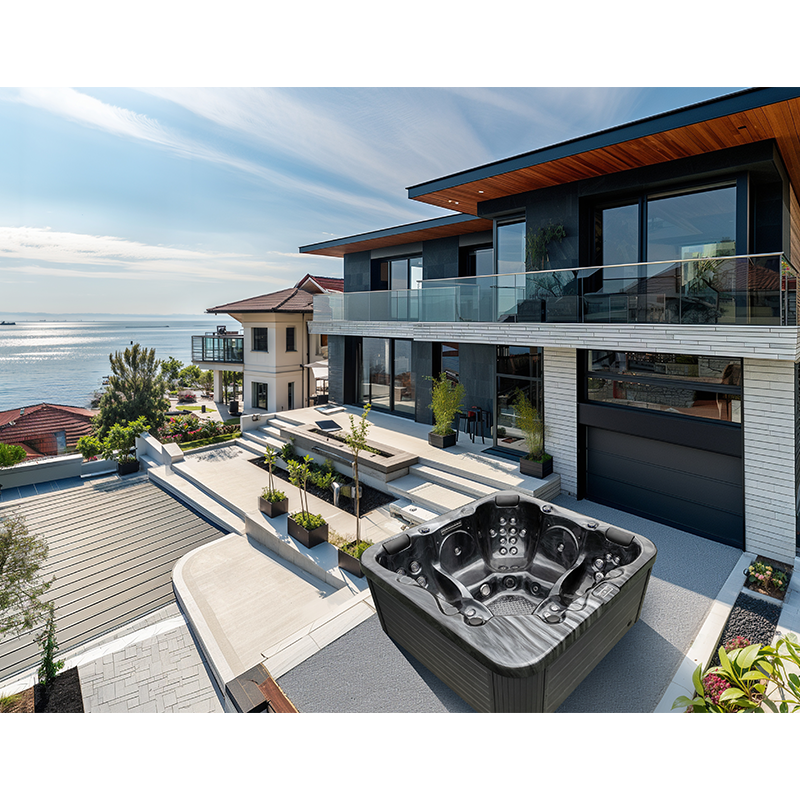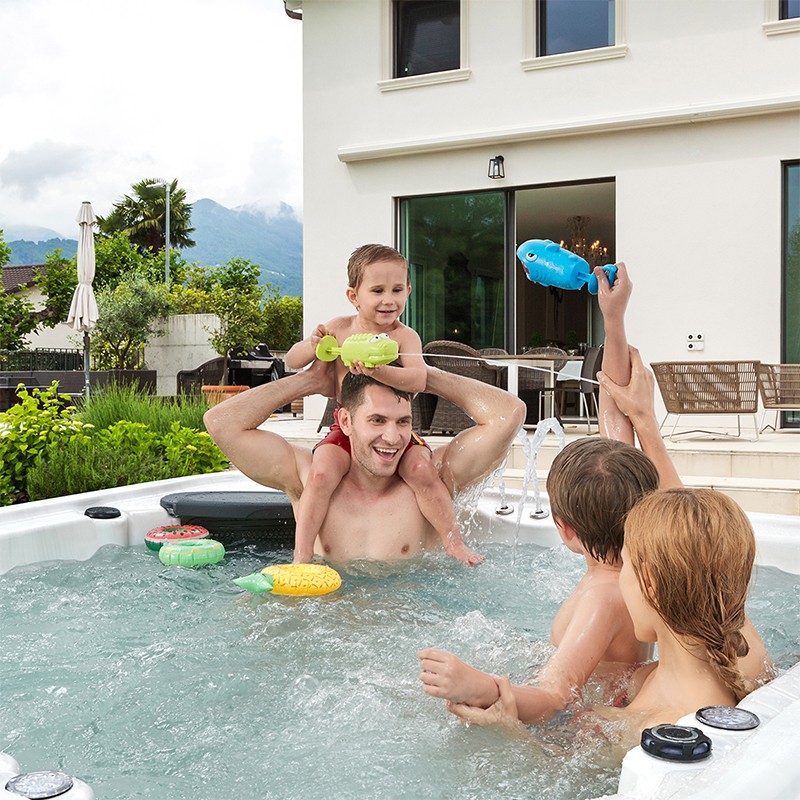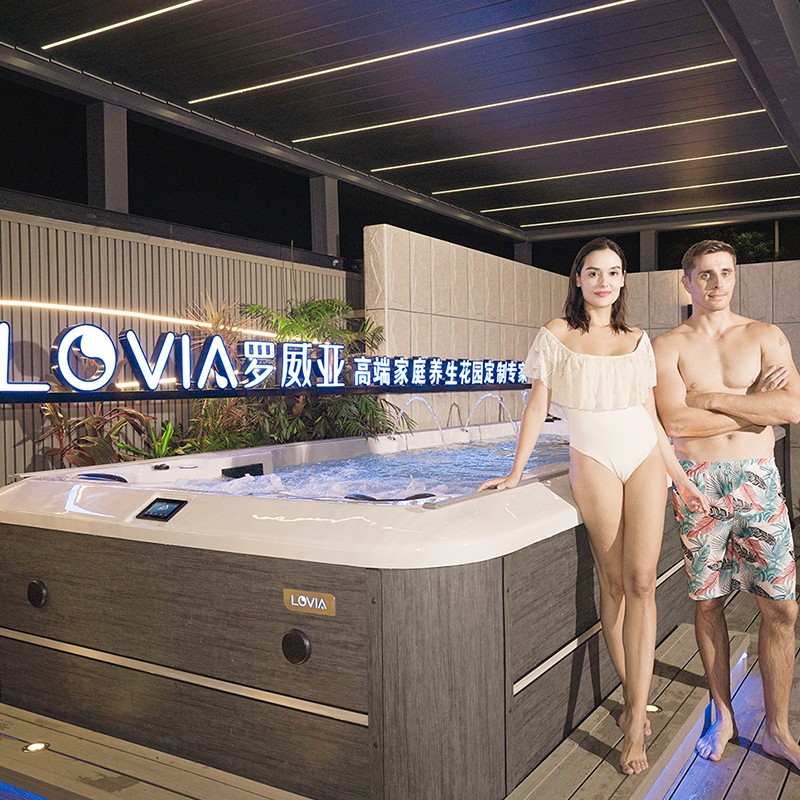
How long is it safe to stay in an outdoor hot tub at 40 degrees Celsius?
2024-11-22 15:30With the popularity of outdoor hot tubs, many users have begun to care about safety issues when enjoying a warm and comfortable bath. The water temperature of 40 degrees Celsius is generally considered to be a suitable temperature for relaxing muscles and relieving stress, but soaking for too long may have an impact on health. So, how long is it safe to bathe in water at 40 degrees Celsius?
This article will explore this issue in depth, answer several common questions about bathing safety for readers, and help users better enjoy a healthy bathing experience.

Why is the water temperature of 40 degrees Celsius suitable for bathing?
The water temperature of 40 degrees Celsius is just in the temperature range where the human body feels warm but not too hot. Usually, the normal body temperature of the human body is about 37 degrees Celsius, and the ideal temperature of a hot bath is slightly higher than the body temperature to make people feel warm and comfortable. For most healthy people, the water temperature of 40 degrees Celsius can relax muscles and promote blood circulation without immediately causing the discomfort of high temperature. In addition, the warm water temperature can also help relieve fatigue and reduce stress, and is an ideal choice for deep relaxation and rest.
However, if you soak in hot water for too long, your body temperature may rise, causing discomfort or potential health risks. This is why it is so important to understand the time limit for bathing.
How long is a safe soak?
It is generally recommended that healthy adults soak in a 40-degree hot tub for 15 to 30 minutes. This allows you to enjoy the comfort and relaxation of warm water without overheating your body. People of different ages, physical conditions and health levels have different tolerances to hot water, so the specific bathing time should vary from person to person.
For users who are trying hot water baths for the first time, it is recommended to start with a shorter time, soaking for 10 to 15 minutes each time, and then increase the time after gradually adapting to ensure that the body can adapt to the temperature.
What are the health risks of soaking for too long?
In a high temperature environment of 40 degrees Celsius, soaking for too long may cause some health risks. Here are some common risk situations:
1. Heat stroke caused by increased body temperature
Soaking in high temperatures for a long time slows down the body's heat dissipation, which may cause the core body temperature to rise. A high core body temperature can cause symptoms such as dehydration and heat stroke, and in severe cases, even lead to confusion and fainting.
2. Increased heart burden
A hot bath can speed up the heartbeat and increase blood circulation, which is beneficial for people with healthy hearts. However, long-term bathing for heart patients or those with high blood pressure will increase the heart burden and increase the risk of heart attack.
3. Dry skin and irritation
Long-term soaking will cause the skin's natural oils to be washed away by hot water, resulting in dry skin and even discomfort symptoms such as itching and redness. Especially for users with sensitive or dry skin, special attention should be paid to the bathing time.

What is the best time for bathing?
The choice of bathing time also has an important impact on safety. Generally, the best time to bathe is in the morning or before going to bed at night.
1. Morning bath
Taking a bath in the morning can wake up the body, help speed up blood circulation, and make people refreshed. It is not advisable to soak for a long time in the morning bath. It is usually recommended to soak for about 15 to 20 minutes to avoid excessive sweating that affects daytime energy.
2. Bathing at night
Taking a bath before going to bed is a very good way to relax. It can effectively relieve fatigue of the day and help you enter a deep sleep. When bathing at night, you can extend the time to 20 to 30 minutes, but it is still not recommended to exceed 30 minutes to prevent high body temperature from interfering with sleep quality.
Are bathing suitable for pregnant women and the elderly?
For certain groups of people, the time and safety requirements for bathing are different. The following are safety recommendations for bathing for pregnant women and the elderly.
1. Pregnant women
During pregnancy, pregnant women have a low tolerance to high temperatures, especially in the early and late stages of pregnancy. Excessive body temperature may affect fetal development. Therefore, pregnant women should not soak in 40 degrees Celsius hot water for a long time when bathing. It is recommended to keep the water temperature below 38 degrees Celsius under the guidance of a doctor, and control the soaking time within 10 to 15 minutes to avoid overheating.
2. Elderly people
The elderly have a slower metabolism and are less adaptable to high temperature environments, which makes them prone to problems such as difficulty in regulating body temperature. Therefore, it is recommended that the elderly bathe in 40 degrees Celsius water for no more than 15 minutes and keep adequate water intake during the bath to prevent dehydration or hyperthermia.

How to monitor body reactions to ensure safety?
During the bathing process, paying attention to the body's immediate reactions is an important measure to ensure safety. The following are several common body reactions that users can use to determine whether they need to leave the hot tub immediately:
1. Faster heartbeat: If you feel your heartbeat is significantly faster, you should leave the hot tub in time to ease your body temperature.
2. Dizziness or nausea: When you experience symptoms such as dizziness and nausea, it may be a sign of overheating. It is recommended to leave the water immediately, replenish water and rest.
3. Excessive sweating: Long-term soaking causes heavy sweating, which may lead to dehydration. When heavy sweating occurs, you should end the bath as soon as possible and replenish water.
By monitoring these reactions, users can adjust the bathing time and frequency according to their own situation to ensure safety and comfort.
How to stay hydrated during the bathing process?
When bathing, the high temperature will cause the body to sweat, and the water loss rate is faster. Therefore, it is important to maintain a balanced water level, especially for users who take a long bath. Here are some tips for staying hydrated:
1. Drink water before and after bathing: Drink a glass of water before bathing, and drink enough water after bathing.
2. Avoid drinking alcohol: Alcohol can cause dehydration and may affect judgment, which is not conducive to safe bathing. Drinking alcohol during bathing is not recommended.
3. Carry a water bottle: Carry a water bottle with you during bathing to replenish water at any time.

Do you need to cool down immediately after bathing?
After bathing, the body temperature is usually slightly higher than usual, so some users will immediately rinse with cold water to cool down quickly. However, experts recommend avoiding the use of cold water immediately after bathing. Rapid cooling may put pressure on the heart and blood vessels. Here are the appropriate treatments after bathing:
1. Cool down naturally: After leaving the hot bathtub, gently dry your body with a towel and put on light clothing to allow the body to naturally return to normal temperature.
2. Avoid strenuous activities: Rest properly after bathing to help the body recover, and avoid strenuous exercise immediately.
Additional tips for bathing safety
In addition to controlling bathing time and paying attention to body temperature, the following safety tips are equally important:
1. Ensure ventilation around the bathtub: The ambient temperature is high when bathing, and ensuring air circulation around the bathtub can help the body dissipate heat.
2. Equip handrails: Since hot water may cause dizziness or loss of balance, installing handrails near the hot tub can help prevent slips.
3. Check the water temperature regularly: Use a thermometer to regularly monitor the hot bathtub water temperature to ensure that the water temperature remains around 40 degrees Celsius and should not exceed the safe range.
